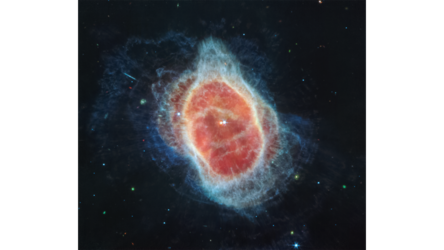

Low mass objects within the Flame Nebula in infrared light
The Flame Nebula, located about 1,400 light-years away from Earth, is a hotbed of star formation less than 1 million years old. Within the Flame Nebula, there are objects so small that their cores will never be able to fuse hydrogen like full-fledged stars—brown dwarfs.
This near-infrared image of a portion of the Flame Nebula from the NASA/ESA/CSA James Webb Space Telescope highlights three low-mass objects, seen in the insets to the right. These objects, which are much colder than protostars, require the sensitivity of Webb’s instruments to detect them. These objects were studied as part of an effort to explore the lowest mass limit of brown dwarfs within the Flame Nebula.
In this image, light at wavelengths of 1.15 microns and 1.4 microns (filters F115W and F140M) is represented as blue, 1.82 microns (F182M) as green, 3.6 microns (F360M) as orange, and 4.3 microns (F430M) as red.
[Image description: A collage of four images showing a dusty nebula. Two-thirds of the collage is taken up by a single image of the nebula, while the remaining third shows three insets stacked on top of each other. In the largest image at left, there is an orange and yellow fang-like cloud of matter that cuts the image in two. There are a number of bright blue and red points of light spread throughout, three of which are circled in white and labeled with a number from one to three. Each circle magnifies an individual object and contains a single, fuzzy point of light in the middle.]





